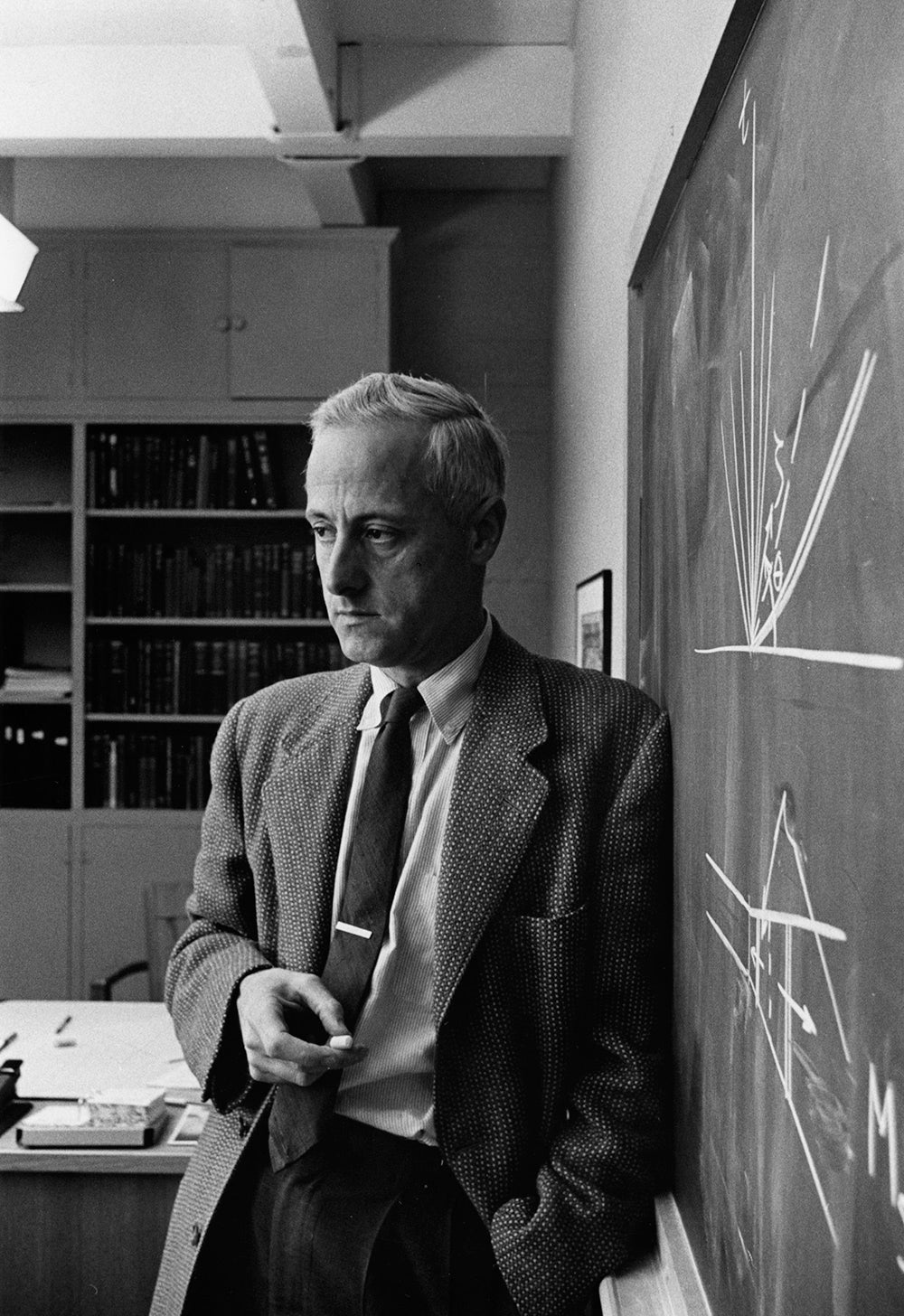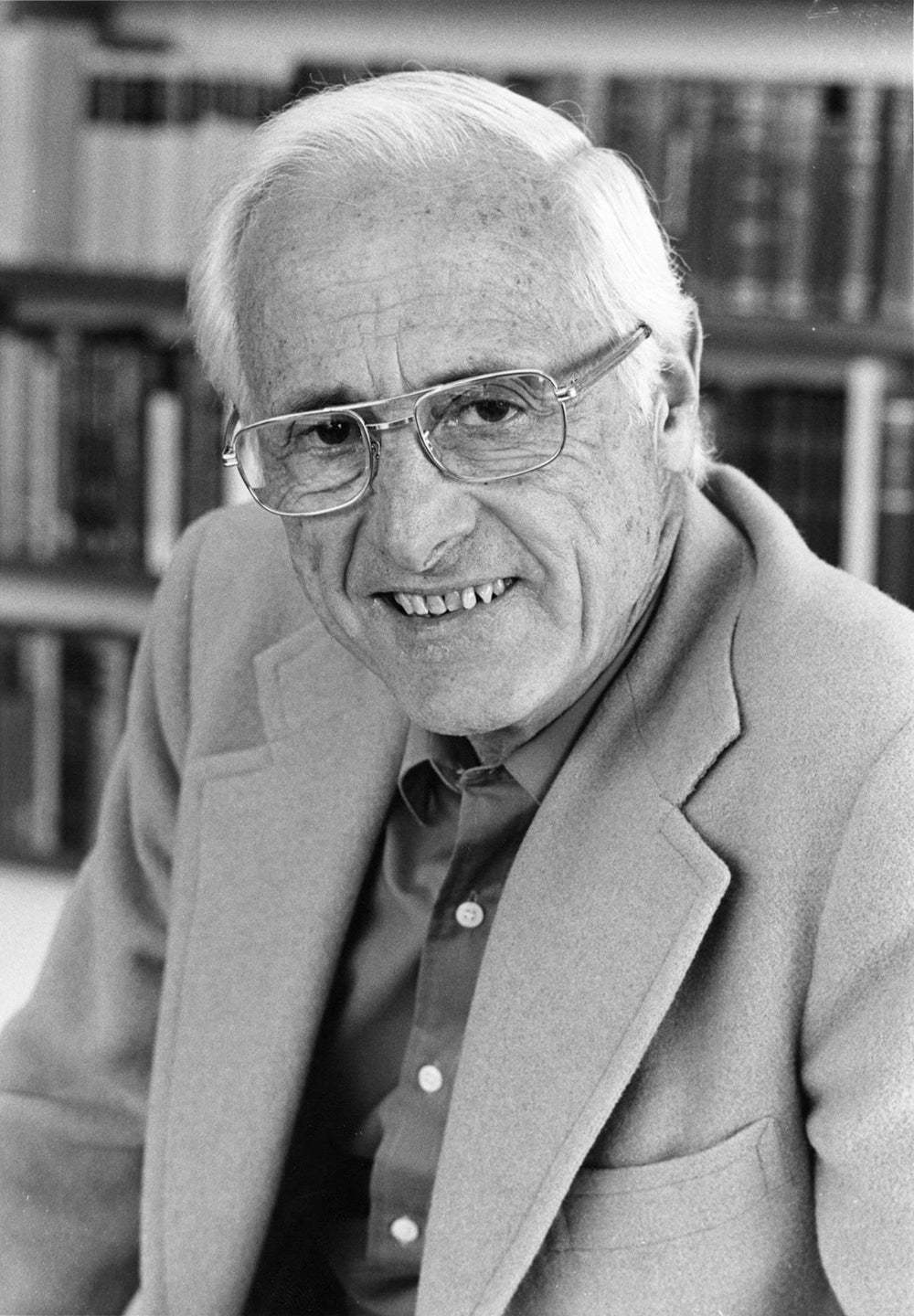Walter Vincenti, professor emeritus of aeronautics and astronautics at Stanford University, laid the engineering groundwork for flight at the speed of sound and helped develop the more efficient swept-wing airplane design still in use today. Vincenti died in Palo Alto on Oct. 11 of complications from pneumonia. He was 102.
“Walter is probably one of the two greatest human beings I’ve met in my adult life,” said Robert McGinn, professor emeritus of management science and engineering, and a former director of the Stanford Program in Science, Technology and Society. “Besides being a superb scholar, he was a person of great integrity, kindness and support for his junior colleagues. He was someone you could trust wholeheartedly.”
Vincenti is best known for making high-speed flight a reality, propelling the emerging field of aeronautics across academia, industry and the military. In addition, he became deeply interested in the history of technology and ethics of engineering. With colleagues William Clebsch, Philip Rhinelander and Stephen Kline, he co-founded Stanford’s program examining the interconnectedness between science, technology and society, the second interdisciplinary undergraduate program of its kind in America.
Over the course of his career, Vincenti received many awards for his work in aeronautics and in history of technology. Most recently, he won the 2016 Guggenheim Medal for a lifetime of work in aeronautics and a 2019 Stanford Engineering Heroes Award, the School of Engineering’s highest honor. Jennifer Widom, dean of Stanford Engineering, said it was a pleasure and honor to meet Vincenti and spend time with him when he came to receive the Stanford Engineering Hero award.
“He was a true visionary,” she said. “Through both his foundational contributions to the field of aeronautics and his dedication to interdisciplinary education, he enriched the lives of so many individuals at Stanford and beyond.”
Inspired by Lindbergh
Walter Guido Vincenti was born April 20, 1917, in Baltimore, Maryland, to Italian immigrants and grew up in Pasadena, California. He followed in the footsteps of his two older brothers and entered Stanford in the fall of 1934. Vincenti’s fascination with aeronautics sprang out of the Lindbergh landing – at age 10, at a movie matinee he saw the news announcement of Charles Lindbergh’s transatlantic landing in Paris – and continued as he majored in mechanical engineering at Stanford. After completing his undergraduate degree, Vincenti enrolled in Stanford’s aeronautics graduate program.

Walter Vincenti conducted pioneering research in fluid dynamics with applications in supersonic flight. (Image credit: Stanford News Service)
Vincenti graduated with an Engineer’s degree in mechanical engineering in 1940 and became one of five engineers invited to work at the newly developed Ames Aeronautical Laboratory. His team pioneered supersonic wind tunnel research at the National Advisory Committee for Aeronautics (NACA), now known as the National Aeronautics and Space Administration (NASA). The mathematical framework they developed allowed for flight at the speed of sound, permanently changing aircraft efficiency and design. His findings prompted aerospace manufacturers to adopt the swept-wing aircraft model that remains an industry standard today.
During World War II, Vincenti was drafted as a noncommissioned naval officer from 1945 to 1946, with permission to keep on experimenting with supersonic swept-wing design – work that he continued after the war.
Vincenti’s work caught the eye of Frederick Terman, the dean of Stanford’s School of Engineering, who had rented a room in his house to Vincenti when he was a graduate student. Looking to revive the Stanford aeronautics department, Terman offered Vincenti full professorship with tenure and Vincenti became a part of the Stanford faculty in January 1957.
In September of the same year, the Russians successfully launched Sputnik. Driven by the Space Age, Vincenti’s investigation of physical gas dynamics related to atmospheric spacecraft reentry put Stanford on the map for astronautics. Vincenti built a hypersonic wind tunnel at Stanford and in 1965 co-authored the textbook Introduction to Physical Gas Dynamics, which remains a foundational book in the field.
“Walter Vincenti was truly a Stanford engineering hero,” said Arthur E. Bryson, the Paul Pigott Professor of Engineering, Emeritus, at Stanford. “He was one of my best friends and one of my closest colleagues in the Department of Aeronautics and Astronautics.”
Interdisciplinary interests
In addition to his technical work, Vincenti began investigating the epistemology of technology, looking at engineering as an ethical issue. This, and a penchant for history, led him in 1971 to co-develop Stanford’s Program in Science, Technology and Society, where he served as the director several times.
The program was originally called Values, Technology and Society, representing an unprecedented program bridging the gap between humanities, engineering and social sciences.
Through this program, Vincenti collaborated across disciplines and cultures. He would say that the program’s goal was “to make not a mixture, but a compound.” This notion highlights the collaborative nature of the program, where Vincenti insisted that “the whole was more than the sum of the parts.”
In 1990, Vincenti published a historical book looking at the epistemology of engineering, titled What Engineers Know and How They Know It: Analytical Studies from Aeronautical History. This publication led to Vincenti being awarded the Engineer-Historian Award from the American Society of Mechanical Engineers in 1997.
“Walter was the most recent recipient of the prestigious Guggenheim Medal but was far bigger than this medal. Most of us in this field will remember him as one of the greatest educators who taught us ‘what engineers know and how they know it,’” said Charbel Farhat, chair of the Department of Aeronautics and Astronautics at Stanford. “He was a friend who insisted on educating me about the history of this department from the first day I joined AA. I will miss his stories, his sudden appearances at our faculty meetings and, most of all, his great sense of humor. He is a role model to all of us.”
Vincenti was recognized as an American Institute of Aeronautics and Astronautics Fellow in 1951 and in 1956 received a Rockefeller Public Service Award for advanced study at Cambridge University, where he worked on a heat shield for spacecraft returning through Earth’s atmosphere. For his devotion to students and skill as a teacher, he was awarded Stanford’s Lloyd W. Dinkelspiel Award for outstanding service to undergraduate education in 1983. In 1998, Vincenti was honored for his contributions to technological history with the Leonardo da Vinci Medal, awarded by the Society for the History of Technology.
“It’s rare for a person to receive the highest awards in a technical field and a field of the social sciences,” said McGinn. “On top of that, he was as magnificent a human being as he was a scholar in two fields.”
“A giant has been lost to Stanford, to the engineering community, to historians and to all who knew him,” said Joseph Corn, a former senior lecturer in the Department of History at Stanford. “He was a prince of a guy.”
In his spare time, Vincenti enjoyed the performing arts, following Stanford football, dogs, working in the garden and supporting the work of his painter wife, Joyce. He is survived by his daughter, Margi Vincenti-Brown, and son, Marc Vincenti; his granddaughters, Gena Thueux and Juliette Harris; his great-grandchildren, Gwendoline and Max Thueux, and Michaela and William Harris; and his sister Jeanne Guichard, his nephews (David and Kent Guichard), his nieces (Julia Guichard and Rachel Tandy), and the latter’s children, Erin and Rowan.
A memorial service is being planned. Memorial donations can be made to Stanford’s Department of Aeronautics and Astronautics or to Save the Children in the name of Walter Vincenti.
For more information about Walter Vincenti’s life and career, two oral histories with Vincenti are available via the Stanford Historical Society Oral History Program.
Media Contacts
Taylor Kubota, Stanford News Service: (650) 724-7707, tkubota@stanford.edu
